There have been substance abuse issues for as long as there has been humanity. Alexander the Great slipped into severe alcoholism after killing his maybe friend, maybe lover, which could have prematurely ended his life. The Khans of the Mongol empire struggled so mightily with drinking that their families staged interventions to limit the number of cups they could drink in a single day. Civil War veterans famously became opioid addicts after being prescribed the medication for a variety of ailments.
Even if you feel alone in your struggle against substance abuse, there is a long history of humans feeling the same way. The path to recovery is as long as civilization’s path to identifying and treating the condition. The history of substance addiction treatment is colorful, filled with errors and misunderstandings, ultimately revealing that the fight against substance abuse is a universal experience that took time and compassion to arrive where it is today.
The Ancients on Substance Abuse
Although we have evidence of substance abuse issues dating back to before the Bronze age, the first person to discuss treatment was likely Aristotle. His philosophy is also the first instance of a belief we can see continually throughout the history of substance abuse, that the condition is a choice and a moral failing. Aristotle saw overdrinking as a deficit of willpower, or “akrasia”. The addict had a personal responsibility to master their passions and not overindulge.
That said, the philosopher did get some things right. For example, he did not see it as a vice. Aristotle believed that since substance abuse was not a rational decision that people made willingly, it could not be vice. Additionally, he correctly identified these were chronic, lifelong conditions, though not for the same reasons we believe today.
The Punitive Model of Substance Abuse Treatment
The ancient world saw no regulation against imbibing substances. Still, as the Middle Ages progressed, regulations to curb substance abuse were introduced that are, for lack of a better word, medieval. Nations passed harsh laws dealing with drunkenness and other perceived substance abuse issues. The Ottoman Empire made death the penalty for smoking. Egypt made smoking hashish, a cannabis product, punishable by pulling teeth. The 13 colonies had rather harsh laws, also. Massachusetts, for example, banned the sale of all alcohol and made allowing anyone to drink for more than half an hour a crime.
This is humanity’s first attempt to deal with the problem systemically. With medicine and psychology far behind what they are today, society settled on punishment, not treatment, as an effective deterrent. Pre-modern societies had larger fish to fry, such as dying of easily treatable illnesses at a young age and therefore had no mindset to build the necessary infrastructure for treatment. This approach to substance abuse management did not work, and as society industrialized and population density grew, so did the issue of addiction.
First Steps toward Recognition
Substance abuse became a societal issue during the late 18th and 19th centuries. Americans drank whiskey like water, with the average consumption rising from 5.8 gallons annually in 1790 to 7.1 gallons by 1830. Spousal abuse, broken families, drinking wages away, and indecent public behavior became moral causes that the reform movements sought to correct.
In line with the adventurous spirit of the time and the rapid advancement of medicine, there was a revolutionary recognition that substance abuse couldn’t merely be legislated away with beatings but that it could be treated. This age was when the term “alcoholism” was first coined by Dr. Magnus Huss, a Swedish physician who recognized there were physical effects behind addiction.
Unfortunately, this was also the age of cruel experimentation and snake oil cure-all treatments. Frequently, the therapy would be worse than the addiction. The most alarming case was the widespread use of morphine and opiates to treat alcohol dependency. Help would still be hard to come by for the average person, with insane asylums, poorhouses, and jails seen as proper places to send addicts, who would receive no treatment. The rich could afford private care and isolation to treat addiction.
The First Treatment Revolution
The first person to suggest the concept of a “sober house” was American founding father and doctor Benjamin Rush, who believed that substance abuse could be treated through religious and moral instruction. This idea would take root, and by the mid-19th century, there were inebriate homes, which were small and privately operated, and inebriate asylums, which were state-funded and tried to address substance abuse medically. In 1870, managers of these institutions came together to form the Association for the Cure of Inebriation (AACI).
The AACI offered a comprehensive treatment program called “detoxification”. A patient would quit cold turkey or be weaned off with substances like cocaine, cannabis, chloral hydrate (closely related to chloroform) and belladonna (a toxic nightshade). Once the cravings were under control, the patient would be restored to full with healthy meals, fluid, exercise, and sunlight. As wacky as the treatment may sound, it was an honest and systemic attempt to treat substance abuse as a medical issue.
This age of treatment wouldn’t last long. Temperance movements worldwide, which understood addiction as a moral failing, gained political traction. With temperance came the return of the punitive model, with criminal justice replacing treatment. The crowning achievements of this movement were the famous U.S. prohibition of alcohol in the 1920s and the lesser-known but equally important Harrison Act in 1914, which limited physicians in prescribing cocaine or opioids for drug addiction. Treatment was also sidelined by criminalizing the act of consumption and driving it underground. By 1925 all morphine clinics had closed. By 1930 most treatment options for alcoholics had disappeared.
Professionalization of Substance Abuse Treatment
Noticing the lack of options for alcoholics, Bill Wilson and Dr. Robert Smith devised Alcoholics Anonymous in 1935, which grew tremendously in popularity. The six guiding principles they established evolved into the 12 steps we know today. In the 1950s, three hospitals in Minnesota established the “Minnesota Model”, which was based on respecting the addict and not degrading them. This model was a true professionalization of treatment, viewing addiction not as an emotional problem but as “a primary, progressive disease” that required holistic treatment. Individual and group counseling, a 28-day stay in a facility, prescription drugs when necessary, and the 12 steps program were all standardized under this system.
The criminal justice system noticed this and added compulsory drug rehabilitation programs to its toolkit. Narcotics Anonymous (N.A.) formed in the wake of A.A.’s success, replicating the same strategies. Since then, many fields and schools of thought have developed, from more pharmacological approaches to community-based drug treatment. However, they all share a modern understanding of the condition that took thousands of years to develop; that substance abuse is a medical condition, not a moral failing, and people can get better.
GateHouse Treatment
No matter what you are struggling with, we can help. At GateHouse Treatment, we understand addiction is challenging and treat everyone with the respect and dignity they deserve. We offer personalized assistance, sober homes, and outpatient treatment, among other therapies. Our team of experts offers 24/7 assistance. Pick up the phone and call (855) 448-3588 to speak to us.
- Cymbalta Withdrawal: Causes, Symptoms, And Management - October 12, 2023
- Boredom in Recovery: 5 Tips to Avoid Relapse - October 6, 2023
- Overconfidence and Rehab: Avoiding Relapse - October 4, 2023




